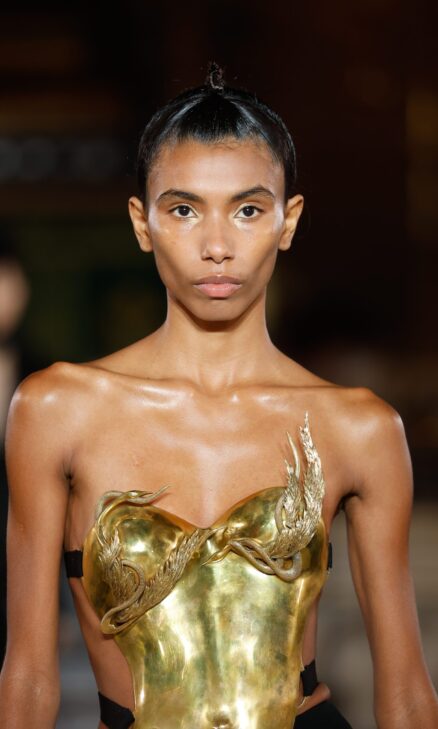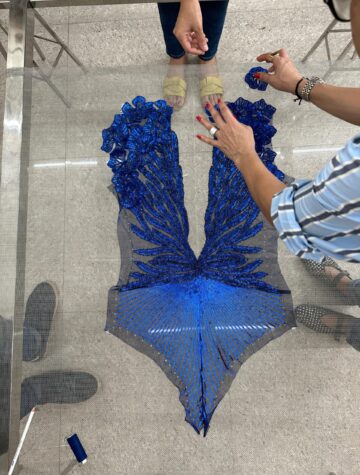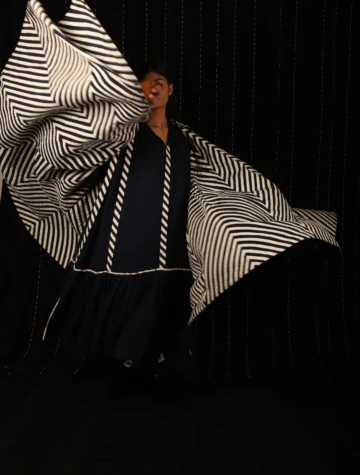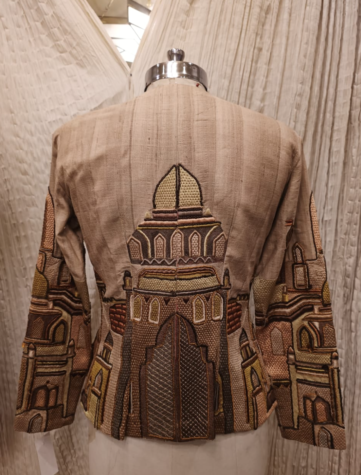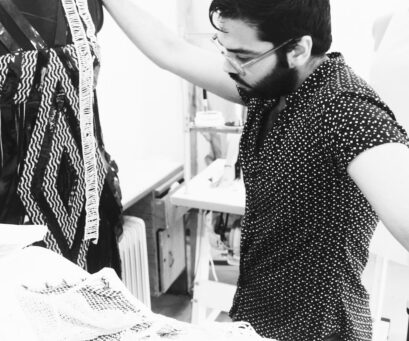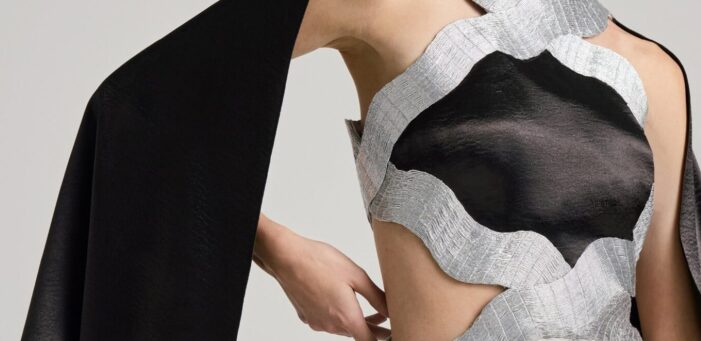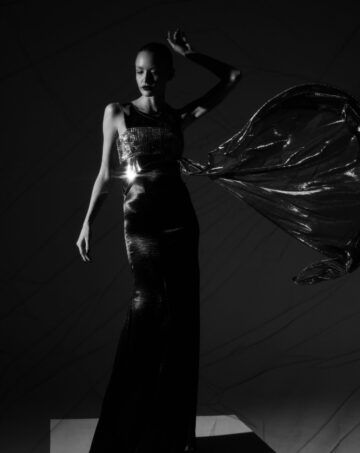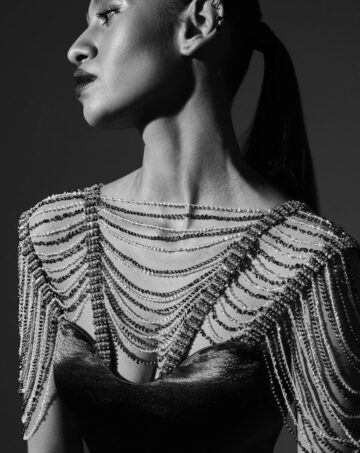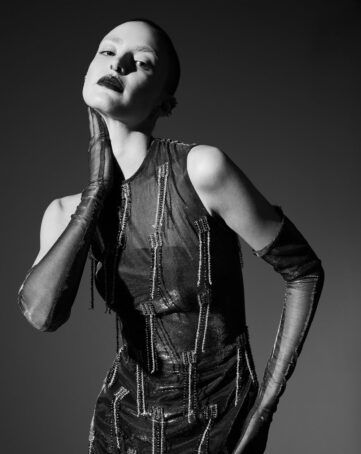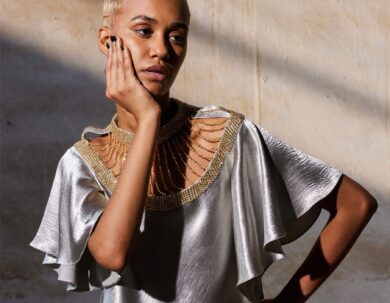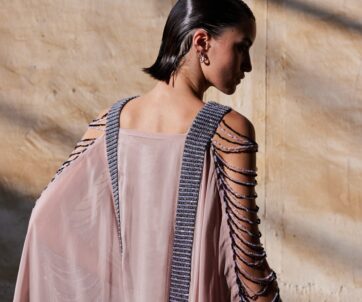The way India experiences art is changing—broadening the walls of traditional galleries events and platforms like the India Art Fair, India Design Week, and Ajio Luxe Wkend are embracing experiential formats, fostering deeper community engagement, and tapping into the wave of cross-disciplinary collaborations. An evolution such as this is currently expanding the reach of art, connecting with a wider and more diverse audience than ever before. But what really goes into curating an event of such scale and diversity? In light of this, Blur The Border delved behind the scenes with some of the most influential voices— Jaya Asokan, Alaiia Gujral, Misha Bains and Shalini Passi, — who shared their curatorial approaches for the recent editions of India Design Week, Ajio Luxe Wkend, and India Art Fair, respectively. “Internationally, South Asian art is experiencing unprecedented momentum, with greater visibility at global platforms such as the Venice Biennale and major museum exhibitions, including The Imaginary Institution of India. At India Art Fair, this shift is evident in the robust participation of international galleries, underscoring shifting public perceptions and engagement. As cross-border collaborations flourish, they not only elevate the region’s artists but also create new possibilities and cultural synergies,” shares Jaya Asokan, Fair director of India Art Fair.
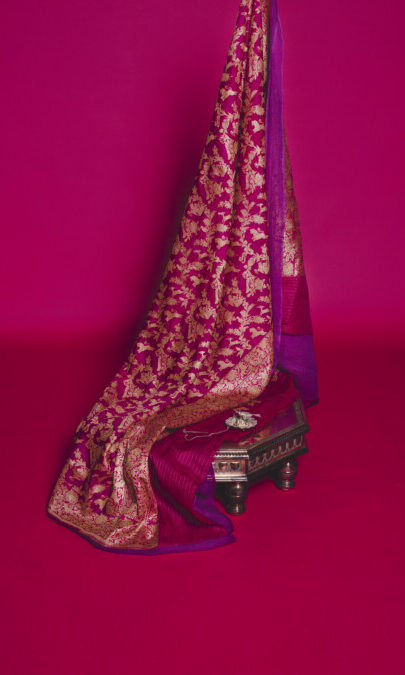
A ripple effect closer to home has sparked a more dynamic and interconnected ecosystem. “I think after 13 years, India Design ID is considered a landmark design event in India. We get to shape conversations around design’s role in society, culture and sustainability, and there’s immense joy in seeing the design community and everyday visitors engage in fresh dialogue around objects, spaces and systems. It has become a space for a much wider audience than just industry insiders. From creating interactive exhibits as part of ID Special Projects to inviting voices from architecture, interior design, film, fashion, tech etc. at the ID Symposium, to collaborating with schools, local artisans and neighborhood collectives to bring grassroot level participation into the fold, as the Design Week of India, it’s our prerogative to bridge audiences and make it a barrier free and inclusive experience for all,” says Misha Bains, Fair Director of India Design Week, highlighting how today’s events reflect a shift—where fashion, architecture, textiles, and design now converge in shared spaces. This evolution signals a broader, more nuanced understanding of what ‘art’ truly represents in our contemporary landscape. “The exhibition ‘Fragments of the Future’ celebrated art as a tool for reflection, emotion, and collective awareness. It bridges the gap between the past and the future, urging us to rethink art’s purpose in the modern context,” says philanthropist and art patron Shalini Passi, who curated a diverse roaster of artists alongside interior design and fashion showcases, curated by Ashiesh Shah and Anaita Shroff Adajania, respectively for Ajio Luxe Wkend 2025. On her latest curatorial project for India Art Fair 2025, Shifting Horizons, creative director, artist and designer Alaiia Gujral, further adds, “It wasn’t just a static exhibition; it’s a living, breathing environment that reflects where design is headed through the lens of contemporary Indian identity.”
Breaking barriers to entry and building lasting ecosystems that celebrate both established and emerging artists, these events go beyond mere showcases — they embody sustained efforts to uplift talent and offer artists the recognition they truly deserve. “The platform is designed not only to spotlight emerging voices in design but also to offer them tangible tools for growth. We’re building a long-term ecosystem—before the showcase, we provide guidance on contracts, help artists clarify and present their work, and open up conversations around pricing, storytelling, and audience engagement,” says Alaiia. Elaborating further, she says, “During the exhibition, the artists’ work is elevated, contextualised alongside peers, presented to collectors, press, and design institutions. We also facilitate direct conversations with industry leaders through walkthroughs and intimate networking moments. Post-show, we remain actively engaging and sharing their work across digital platforms, connecting them with future opportunities and documenting their contributions in a way that supports continued visibility.”
Although galleries will always retain value in their traditional formats, their current evolution is becoming more open and welcoming, encouraging audiences to move from passive observation to active participation. Such an approach adds back to the entire ecosystem, creating a more meaningful relationship between the art, its creators, and the viewers who engage with it. To this, Jaya adds, “A key priority has been ensuring that the fair, along with our year-round programming, remains inclusive and accessible to a diverse audience. This is reflected in our dynamic workshops, talks, and art tours that engage all age groups, as well as in our dedicated initiatives like the Inclusion Lab, and through partnerships with organisations such as Access for All and LAND (Learning through Arts, Narrative, and Discourse),” adds Jaya Asokan. Offering a more in-depth perspective through a recent example, Misha expands further on her latest curation for India Design Week’s 2025 edition.“The special exhibition TRANSITION explored 45 Chairs by 45 Designers as a mirror of the creator’s mind in a period defined by innovation, consciousness and experimental forms of expression. The idea of choosing a simple object (Chair) was to allow a much wider audience to connect and interact with this exhibition. We wanted the viewers to posit the various internal and external influences that shape each piece.”
Nothing is siloed in this process; it’s all about collaboration, where every voice and vision is to create something greater than the sum of its parts. “A huge part of the curation is also about dialogue with the designers and the audience. Many of the designers were involved in conversations as their custom pieces evolved, and that collaborative energy is core to how the show has taken shape.” Alaiia says, “I think collaboration is key, and thus I engaged in discussions with the artists and designers to understand their creative process and the story behind their work. For me, it’s important that the installation reflects their artistic vision while also enhancing the overall theme of the exhibition,” Shalini adds.
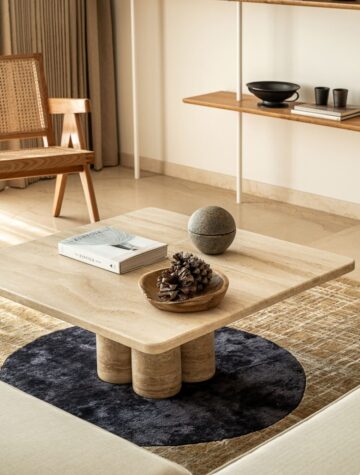
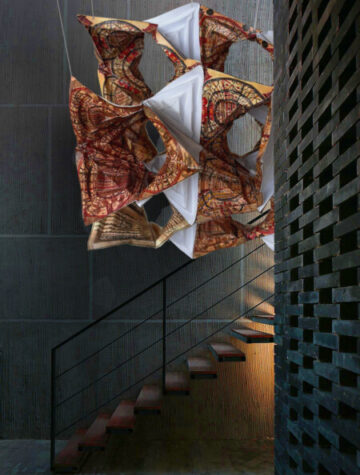
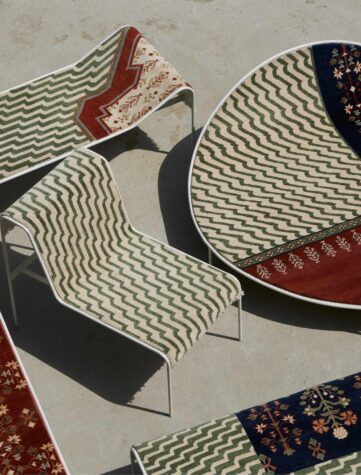
It ultimately makes one reflect on how curators play a pivotal role in shaping the narrative of art and design through today’s events, considering every detail — from selecting the works to crafting the experience itself, including the ambience that surrounds it. “The first step revolved around the theme of transitions in contemporary art in India. When choosing artists for the exhibition, I was focusing on those whose work offers diverse perspectives while aligning with the theme of the exhibition. I wanted pieces that challenged the convention, provoked thought, and provided a glimpse into the future of art,” says Shalini Passi on the overarching aim. On similar lines, Alaiia says, “We started by defining the conceptual framework—exploring how traditional materials and cultural techniques can be transformed into visions of the future.” She continues, “While each piece needed to resonate with the overall theme, it also needed to hold its own story. We were especially drawn to designers who are pushing boundaries with process or form, yet remain grounded in something personal or culturally rooted.” A crucial part of this process is also pushing boundaries. The curators aim to move beyond the status quo, opening dialogues that inspire new ways of thinking. “I wanted to select artists and designers whose body of work embodied innovation, challenged perceptions, and addressed societal shifts,” says Shalini. Similarly, “We sought out designers whose practices embody that intersection of heritage and innovation. We looked closely at materiality, how designers are experimenting with fibers, metals, wood, light, form and also at the narrative their work carries, adds Alaiia.
Additionally, it emphasises the creation of a unique environment—a space that is not only dedicated to showcasing these voices but also serves as a platform that reflects the collective energy and atmosphere of the event itself. For both Shalini and Misha, the challenges shared a common thread. “Each artist had their own requirements—whether it’s the size of the artwork or specific installation conditions—and it was essential for me to ensure that these elements came together smoothly,” shares Shalini, reflecting on the complexities of coordination. Misha echoes a similar sentiment, noting, “Coordinating across multiple brands and design studios, international participants, timelines, and installation requirements is a massive logistical challenge. From shipping delays to last-minute technical glitches, every detail requires precision.”
However, bringing together such a multifaceted community is no small feat, especially as it extends beyond its familiar stakeholders—galleries and buyers—into a more diverse network. “Aligning the visions and expectations of designers, sponsors, institutions, and the public demands constant negotiation and creative mediation,” she explains. Shalini adds, “We had to maintain the integrity and bring the exhibition together as a unit, while also accommodating the individual voices of the artists. I wanted to create a space where each work could shine, but also where the overall experience remains cohesive and tied together.” Curating such a platform also involves responding to evolving cultural and environmental demands. “Ensuring the theme is not just timely but also resonates globally while retaining local context is always a fine balance,” Misha reflects. “And lastly, incorporating eco-conscious design and practices—from materials used in installations to minimising waste—is not just an expectation now, it’s a responsibility.”
Despite the intricacies involved, the rewards in the end far outweigh the challenges. “I got the opportunity to work with many visionary artists and designers who are incredibly inspiring. Watching how the audience interacted with the exhibition and the conversations it sparked was truly fulfilling,” says Shalini. “All this becomes worth the effort,” Misha concludes with, “When you know that the platform we are building offers an opportunity to elevate emerging voices in design and showcase India’s creative leadership on an international stage.”
